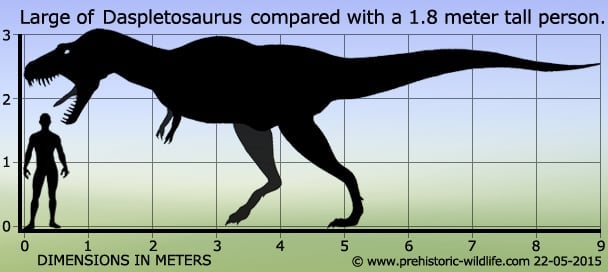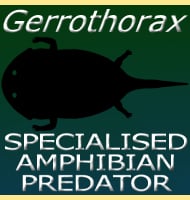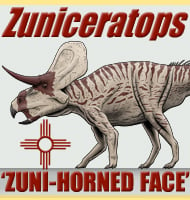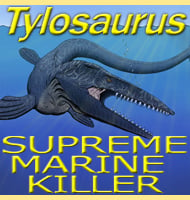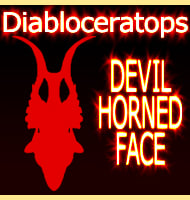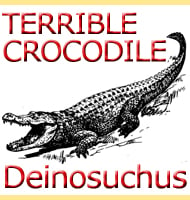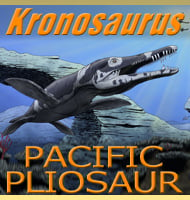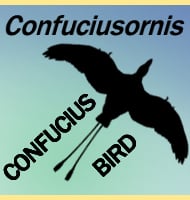In Depth
Until 1970, Daspletosaurus was thought to be another specimen of Gorgosaurus. Both were active at the same time and location as one another, yet closer study of the Daspletosaurus revealed a much more powerful animal than the more lightly built Gorgosaurus. It has been surmised that the two predators may have focused their attention to different prey groups with Daspletosaurus favouring slower and more durable prey items that may necessitate the need for extra power. Possible dispute for this would come from a hadrosaur known to have been killed by a Daspletosaurus, or it may just be proof that as a predator, it would take whatever it had chance too.
Although older, Daspletosaurus is remarkably similar to Tyrannosaurus with the main differences being smaller but heavier build, the feet shorter and the teeth proportionally larger. This has led some to conclude that Daspletosaurus was the ancestor of Tyrannosaurus, while others consider it to be a sub species, although no definitive Tyrannosaurus remains have been found to date from the same time as Daspletosaurus.
Daspletosaurus is a possible contender for social interaction leading to pack hunting. At least two skulls show tooth marks that were inflicted to the face, with one of the skulls belonging to a juvenile showing that the tooth marks had healed over, indicating that the bite was not intended to be fatal. Face biting occurs in other predators, and can relate to a number of reasons including dominance over a group subordinate, territorial dominance or possibly even being inflicted during the mating process. An alternative explanation however is that these marks were caused by an ailment such as a parasitic infection.
In Montana, the remains of three Daspletosaurus and five hadrosaurs have been found in a bone bed together. It’s unlikely that the bones had been washed together via a river flow, and some consider this evidence that Daspletosaurus may have formed packs. Of the three remains, one was an adult, another juvenile, but the age of the third cannot be determined. However this only really proves that three Daspletosaurus died in the same location. The fact that the hadrosaur remains outnumber the predators lends a little weight to this as it asks the question, how can just three predators kill at least five prey items in the same locale? If the hadrosaurs had been trapped, it’s possible. Alternatively the hadrosaurs might have been killed by something else such as a volcanic event involving the discharge of toxic gas. Then roaming Daspletosaurs happened upon the bounty and were then themselves killed by further discharges of gas. Another possibility is that the Daspletosaurs were killed by other predators in competition for the carcasses. The only other explanation is that the hadrosaurs were killed and dragged to some kind of lair. But why would three large predators waste energy by doing that when they could eat their fill where they made the kill? While there is other evidence to suggest the pack hunter theory in other large theropods, here in this instance it is at best circumstantial.
Further Reading
– Tyrannosaurs from the Late Cretaceous of western Canada. – National Museum of Natural Sciences, Publications in Paleontology 1:1-34. – Dale Russel – 1970. – Gut contents from a Cretaceous tyrannosaurid: implications for theropod dinosaur digestive tracts. – Journal of Paleontology 75 (2): 401–406. – David J. Verricchio – 2001. – An unusual multi-individual tyrannosaurid bonebed in the Two Medicine Formation (Late Cretaceous, Campanian) of Montana (USA). by Philip J. Currie, David Trexler, Eva B. Koppelhus, Kelly Wicks & Nate Murphy. In The Carnivorous Dinosaurs, Indiana University Press. pp. 313–324, Kenneth Carpenter eds. – 2005. – Pre- and postmortem tyrannosaurid bite marks on the remains of Daspletosaurus (Tyrannosaurinae: Theropoda) from Dinosaur Provincial Park, Alberta, Canada. – PeerJ 3: e885. – D. W. E. Hone & D. H. Tanke – 2015. – A new tyrannosaur with evidence for anagenesis and crocodile-like facial sensory system. – Scientific Reports. 7. – Thomas D. Carr, David J. Varricchio, Jayc C. Sedlmayr, Eric M. Roberts & Jason R. Moore – 2017. – A transitional species of Daspletosaurus Russell, 1970 from the Judith River Formation of eastern Montana. – PeerJ. 10. e14461. – El�as A. Warshaw & Denver W. Fowler – 2022.
